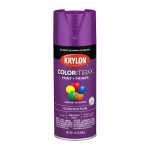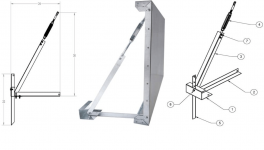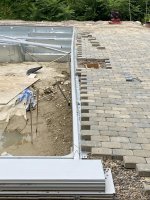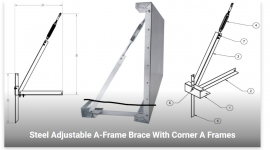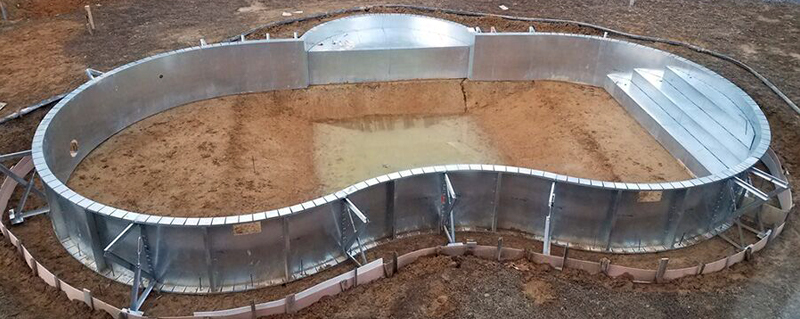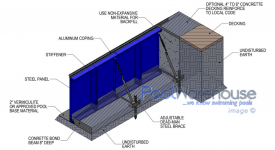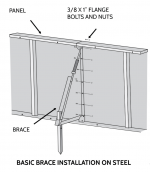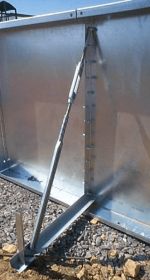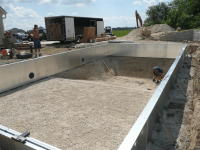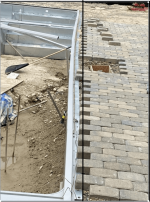I bought a DIY rectangular inground pool kit from Pool Warehouse. Dig a hole, bolt together some steel walls in the hole, and drop a liner over the whole thing. There are braces every ~8' or so along the outside with turnbuckles to make the walls plumb. A concrete collar was then poured ~8" deep around the outside to lock the base of the walls in.
The issue is that as I'm backfilling with the recommended crushed gravel, the tops of the longer walls are bowing in. The pool will be getting an automatic cover that rides on rails, and the walls need to be parallel at the top or it will bind.
PW says to dig out the backfill, then wait until the liner and water are in to backfill again. But frankly, I don't think this will work: for reference, I put three 1800lb ratchet straps on three different mounting points along the top of the most bowed wall. I couldn't physically ratchet them anymore and the wall was still not plumb. I ended up having to connect the straps to the bucket of my farm tractor and (gently) reverse until the wall was plumb, then quickly jam on the brake so the tractor wouldn't get pulled back.
I have two of these iron pieces that something heavy was shipped to me in. My thought is to dig out the backfill, build a form around the outside of these pieces below grade, hammer some full-length rebar through the holes in them, then pour concrete around them. I can then hook some additional turnbuckes onto a few of the holes and hopefully get the walls plumb.
But if this doesn't work, I'm in trouble. Any other ideas on how to plumb up these walls? I think the iron pieces are a good start, but I'm concerned even with 4-6 pieces or rebar and a few hundred lbs of concrete it won't be enough to hold and the whole assembly will end up getting pulled toward the wall.
I'd welcome any input. I told my son he could have a pool party for his 9th birthday at the end of September!
The issue is that as I'm backfilling with the recommended crushed gravel, the tops of the longer walls are bowing in. The pool will be getting an automatic cover that rides on rails, and the walls need to be parallel at the top or it will bind.
PW says to dig out the backfill, then wait until the liner and water are in to backfill again. But frankly, I don't think this will work: for reference, I put three 1800lb ratchet straps on three different mounting points along the top of the most bowed wall. I couldn't physically ratchet them anymore and the wall was still not plumb. I ended up having to connect the straps to the bucket of my farm tractor and (gently) reverse until the wall was plumb, then quickly jam on the brake so the tractor wouldn't get pulled back.
I have two of these iron pieces that something heavy was shipped to me in. My thought is to dig out the backfill, build a form around the outside of these pieces below grade, hammer some full-length rebar through the holes in them, then pour concrete around them. I can then hook some additional turnbuckes onto a few of the holes and hopefully get the walls plumb.
But if this doesn't work, I'm in trouble. Any other ideas on how to plumb up these walls? I think the iron pieces are a good start, but I'm concerned even with 4-6 pieces or rebar and a few hundred lbs of concrete it won't be enough to hold and the whole assembly will end up getting pulled toward the wall.
I'd welcome any input. I told my son he could have a pool party for his 9th birthday at the end of September!


